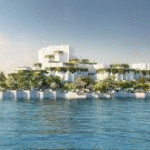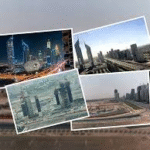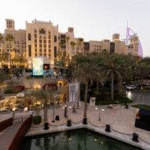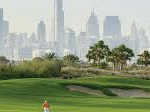Now Reading: Desert Sustainability: How Dubai’s Harsh Climate Fuels Green Innovation in Real Estate
-
01
Desert Sustainability: How Dubai’s Harsh Climate Fuels Green Innovation in Real Estate
Desert Sustainability: How Dubai’s Harsh Climate Fuels Green Innovation in Real Estate

Table of Contents
Desert sustainability has become more than just a survival strategy in Dubai—it’s now a bold force driving innovation in the city’s real estate industry. With its extreme temperatures, water scarcity, and dry terrain, Dubai is turning environmental challenges into opportunities for building a greener, smarter urban future.
Developers, investors, and architects are embracing desert sustainability to meet growing demands for eco-friendly properties while supporting the UAE’s long-term environmental vision. From solar-powered homes to smart irrigation systems and energy-saving designs, Dubai is using its harsh climate as motivation to lead the region in sustainable living.
Why Desert Sustainability Matters Now More Than Ever
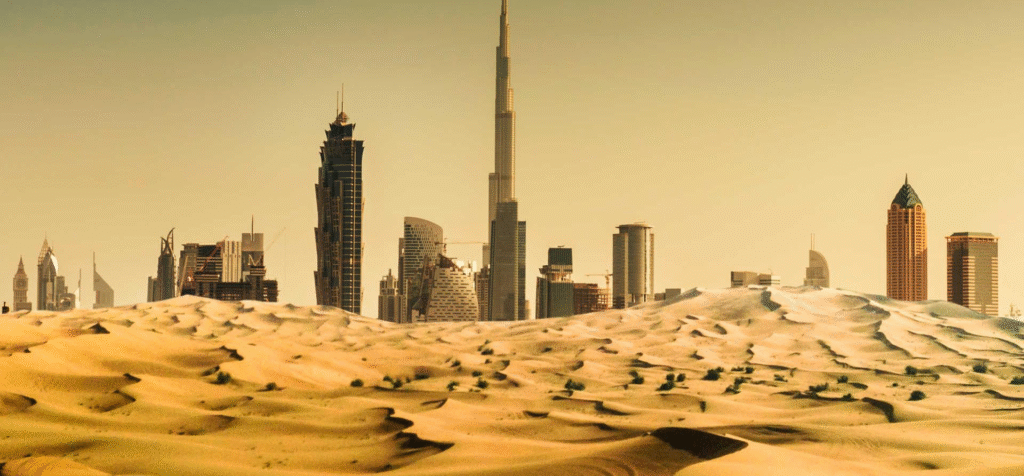
Dubai’s population continues to grow, and so does the pressure on natural resources. In a city where summer temperatures often cross 45°C and annual rainfall is less than 100 mm, managing energy and water efficiently is essential.
The UAE’s Net Zero 2050 Strategy pushes every sector to reduce its carbon footprint, and the real estate market is one of the most active players. By focusing on desert sustainability, developers are creating solutions that reduce energy use, cut emissions, and promote long-term value.
7 Green Real Estate Innovations Boosting Desert Sustainability in Dubai
Let’s explore how Dubai is applying desert sustainability principles to redefine real estate:
1. Solar Energy Integration
Dubai’s desert sun is now a resource, not a burden. Real estate projects increasingly feature rooftop solar panels and solar water heaters. The city’s massive Mohammed bin Rashid Al Maktoum Solar Park powers not just public buildings but also many private developments.
New properties are being designed to generate their own clean energy, reducing reliance on traditional power grids. This shift helps cut both emissions and utility bills for homeowners.
2. Energy-Efficient Architecture
Desert sustainability starts with design. Buildings in Dubai now incorporate passive cooling systems, double-glazed windows, and thermal insulation to block out heat and reduce air conditioning loads. Sustainable design choices include shaded terraces, smart ventilation, and lighter building materials that reflect rather than absorb sunlight.
Architects are inspired by traditional Middle Eastern wind towers (barjeel), reimagined with modern technology to create low-energy ventilation in homes.
3. Water Recycling and Smart Irrigation
With freshwater limited, Dubai real estate embraces greywater recycling systems, which reuse shower and sink water for garden use. Landscaping is also becoming smarter with AI-powered irrigation that only waters when necessary and detects leaks.
Projects like The Sustainable City have proven that with desert sustainability planning, water consumption can drop by over 50% without sacrificing greenery.
4. LEED and Estidama Certifications
Buyers and investors now look for green certifications. Properties that meet LEED (Leadership in Energy and Environmental Design) or Estidama standards are not just eco-conscious—they also tend to have higher resale value and lower operating costs.
Dubai’s Green Building Regulations make these standards mandatory for all new government buildings and strongly recommended for private developments.
5. Smart Home Technologies
Desert sustainability is also about smarter consumption. IoT-based home systems allow residents to monitor and control lighting, air conditioning, and water usage through mobile apps.
These systems automatically adjust settings based on occupancy or time of day, helping reduce waste. For example, motion-sensor lights and smart thermostats are now common features in new homes.
6. Green Roofs and Vertical Gardens
To combat the heat island effect, many Dubai buildings are now adding green roofs and vertical gardens. These not only lower internal building temperatures but also improve air quality and promote biodiversity.
Even commercial real estate, including malls and office towers, are adopting desert sustainability techniques to integrate greenery into design.
7. Community-Wide Sustainability Models
Some of Dubai’s most successful projects are those that apply desert sustainability at a community level. The Sustainable City, Masdar City, and Dubai South are master-planned developments that include electric vehicle infrastructure, pedestrian zones, solar farms, and recycling centers.
These communities aim to be self-sufficient, offering a lifestyle aligned with eco-friendly values. Investors are taking note, with these projects seeing faster appreciation and lower vacancy rates.
Economic Benefits of Desert Sustainability in Real Estate
Apart from the environmental gains, desert sustainability gives Dubai’s real estate market a financial edge. Sustainable homes often:
- Have lower operating costs due to reduced energy/water use
- Achieve higher rental yields due to increased tenant demand
- Qualify for green financing programs, offering better loan terms
- Experience slower depreciation, as they are future-ready for climate regulations
A recent study by Knight Frank found that green-certified properties in Dubai can command up to 10% higher rents and resell faster than conventional homes.
The Road Ahead: Dubai’s Sustainability Goals and Real Estate’s Role

Dubai’s 2040 Urban Master Plan aims for green development to be the city’s default standard. At least 60% of Dubai’s land area is to be dedicated to nature reserves and parks, with real estate built around sustainability.
Moreover, events like COP28 hosted in the UAE have pushed sustainability to the top of the policy agenda. This global attention ensures that desert sustainability will remain a major trend across residential, commercial, and industrial real estate segments.
Challenges in Achieving Full Desert Sustainability
Despite major progress, challenges remain. Upfront costs for solar installations or greywater systems can be high. Education is still needed to shift buyer priorities from size and luxury to sustainability and efficiency.
Developers must also balance affordability with green building features to appeal to middle-income buyers. Government incentives and green financing will play a key role in overcoming these hurdles.
Conclusion: Dubai’s Green Vision Turns Desert Limits Into Real Estate Strength
In a place once considered inhospitable, desert sustainability is rewriting the rules of urban development. Dubai has turned environmental hardship into innovation, setting an example for other arid regions across the globe.
With every solar panel, recycled drop of water, and energy-smart building, Dubai is not just surviving the desert—it is thriving in it. And through its real estate sector, the city is proving that sustainability is not just a climate strategy—it’s also a smart investment.
Also Read – Solar Power Villas: 7 Powerful Reasons Dubai Leads the Future











